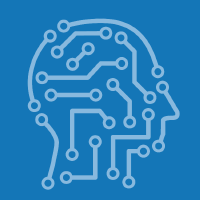Topic Menu
► Topic MenuTopic Editors



Advances in Artificial Neural Networks
Topic Information
Dear Colleagues,
This Topic Issue (TI), interdisciplinary in character, focuses on the dissemination of ideas between the various branches of pure and applied sciences, covering a range of artificial neural networks, including pattern recognition, computer vision, logical reasoning, knowledge engineering, expert systems, artificial intelligence, intelligent control and intelligent systems. It aims to promote the development of information science and technology.
The central interest of this TI is on mathematical and physical modeling, numerical/analytical study and computation, as well as the experimental investigation of artificial neural networks and their applications in order to understand their operation mechanism, potential application value and future development directions.
From the point of view of theoretical aspects, contributions addressing the following topics are welcome:
- Numerical algorithms and procedures;
- Convolutional Neural Network (CNN);
- Recurrent Neural Network (RNN);
- Snapshot ensembles;
- Dropout;
- Bias correction;
- Cyclical learning rates;
- Neuro-Symbolic Hybrid Intelligent Architecture;
- Radical Basis Neural Networks;
- Neural Network for Adaptive Pattern Recognition;
- Neural Network Learning;
- Recent Advances in Neural Network Applications in Process Control;
- Neural Architectures of Fuzzy Petri Nets.
Application engineers, scientists, and research students from all disciplines with an interest in considering neural networks to solve real-world problems are encouraged to contribute to this Topic Issue.
Dr. Krzysztof Ejsmont
Dr. Aamer Bilal Asghar
Dr. Yong Wang
Dr. Rodolfo Haber
Topic Editors
Keywords
- artificial neural networks (ANNs)
- neuro-fuzzy systems
- adaptive neuro-fuzzy inference system (ANFIS)
- backpropagation
- training algorithm
- MPPT algorithm
- wavelet
- support vector machines
- particle swarm optimization (PSO)
- adaptive cuckoo search optimization (ACSO)
- partial shading (PS)
- hybrid optimization
Participating Journals
| Journal Name | Impact Factor | CiteScore | Launched Year | First Decision (median) | APC |
|---|---|---|---|---|---|

AI
|
- | - | 2020 | 20.8 Days | CHF 1600 |

Algorithms
|
2.3 | 3.7 | 2008 | 15 Days | CHF 1600 |

Applied Sciences
|
2.7 | 4.5 | 2011 | 16.9 Days | CHF 2400 |

Information
|
3.1 | 5.8 | 2010 | 18 Days | CHF 1600 |

Mathematics
|
2.4 | 3.5 | 2013 | 16.9 Days | CHF 2600 |

MDPI Topics is cooperating with Preprints.org and has built a direct connection between MDPI journals and Preprints.org. Authors are encouraged to enjoy the benefits by posting a preprint at Preprints.org prior to publication:
- Immediately share your ideas ahead of publication and establish your research priority;
- Protect your idea from being stolen with this time-stamped preprint article;
- Enhance the exposure and impact of your research;
- Receive feedback from your peers in advance;
- Have it indexed in Web of Science (Preprint Citation Index), Google Scholar, Crossref, SHARE, PrePubMed, Scilit and Europe PMC.


